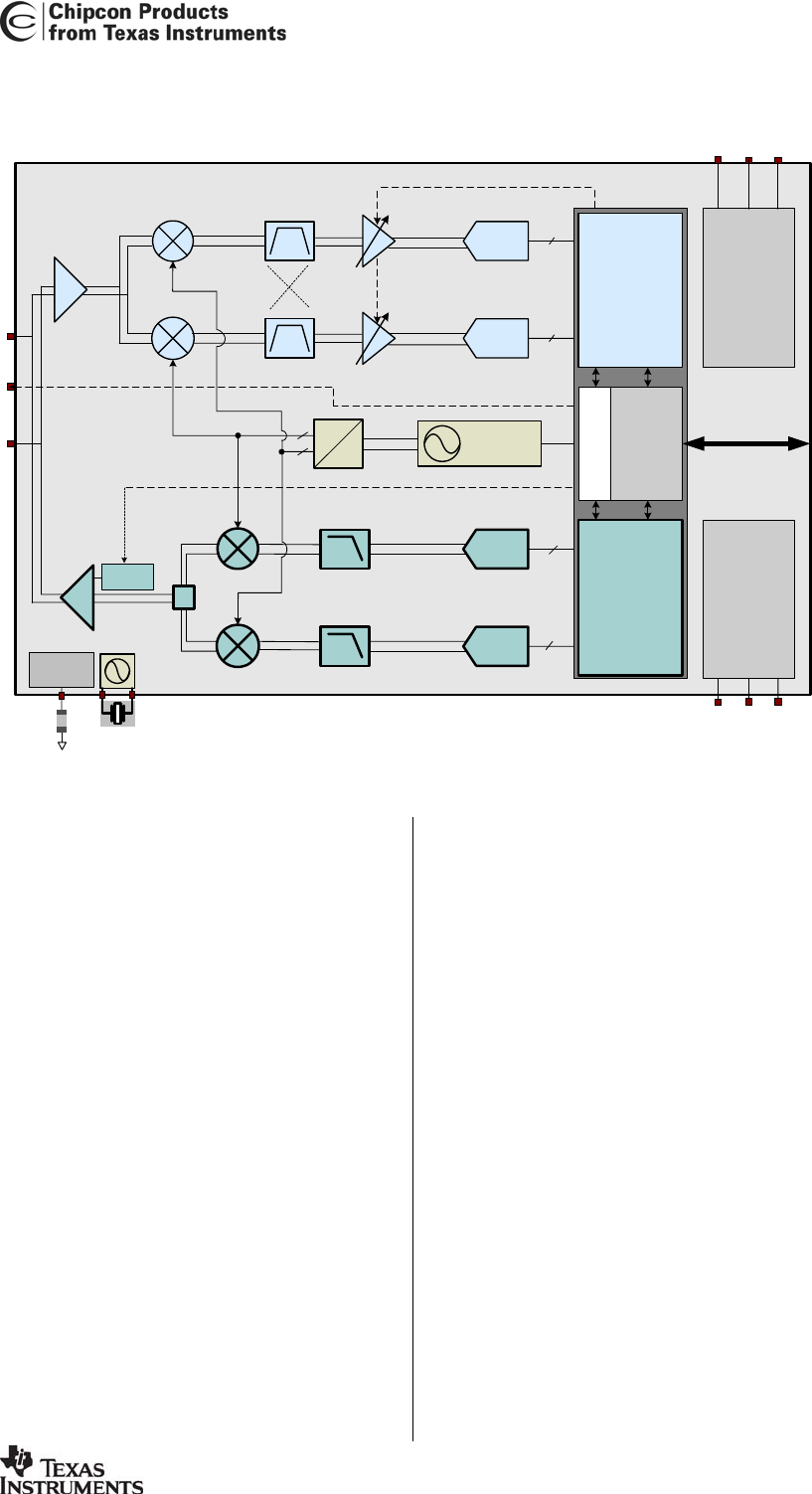
CC2420
SWRS041B Page 17 of 89
8 Circuit Description
Serial
microcontroller
interface
LNA
DIGITAL
DEMODULATOR
- Digital RSSI
- Gain Control
- Image Suppression
- Channel Filtering
- Demodulation
- Frame
synchronization
DIGITAL
MODULATOR
- Data spreading
- Modulation
On-chip
BIAS
DIGITAL
INTERFACE
WITH FIFO
BUFFERS,
CRC AND
ENCRYPTION
CONTROL LOGIC
AUTOMATIC GAIN CONTROL
TX POWER CONTROL
TX/RX CONTROL
XOSC
16 MHz
R
ADC
ADC
DAC
DAC
0
90
FREQ
SYNTH
SmartRF
CC2420
Power
Control
PA
Serial
voltage
regulator
Digital and
Analog test
interface
Figure 2.
CC2420
simplified block diagram
A simplified block diagram of
CC2420
is
shown in Figure 2.
CC2420
features a low-IF receiver. The
received RF signal is amplified by the low-
noise amplifier (LNA) and down-converted
in quadrature (I and Q) to the intermediate
frequency (IF). At IF (2 MHz), the complex
I/Q signal is filtered and amplified, and
then digitized by the ADCs. Automatic
gain control, final channel filtering, de-
spreading, symbol correlation and byte
synchronisation are performed digitally.
When the SFD pin goes active, this
indicates that a start of frame delimiter has
been detected.
CC2420
buffers the
received data in a 128 byte receive FIFO.
The user may read the FIFO through an
SPI interface. CRC is verified in hardware.
RSSI and correlation values are appended
to the frame. CCA is available on a pin in
receive mode. Serial (unbuffered) data
modes are also available for test
purposes.
The
CC2420
transmitter is based on direct
up-conversion. The data is buffered in a
128 byte transmit FIFO (separate from the
receive FIFO). The preamble and start of
frame delimiter are generated by
hardware. Each symbol (4 bits) is spread
using the IEEE 802.15.4 spreading
sequence to 32 chips and output to the
digital-to-analog converters (DACs).
An analog low pass filter passes the signal
to the quadrature (I and Q) upconversion
mixers. The RF signal is amplified in the
power amplifier (PA) and fed to the
antenna.
The internal T/R switch circuitry makes the
antenna interface and matching easy. The
RF connection is differential. A balun may
be used for single-ended antennas. The
biasing of the PA and LNA is done by
connecting TXRX_SWITCH to RF_P and
RF_N through an external DC path.
The frequency synthesizer includes a
completely on-chip LC VCO and a 90
degrees phase splitter for generating the I


















